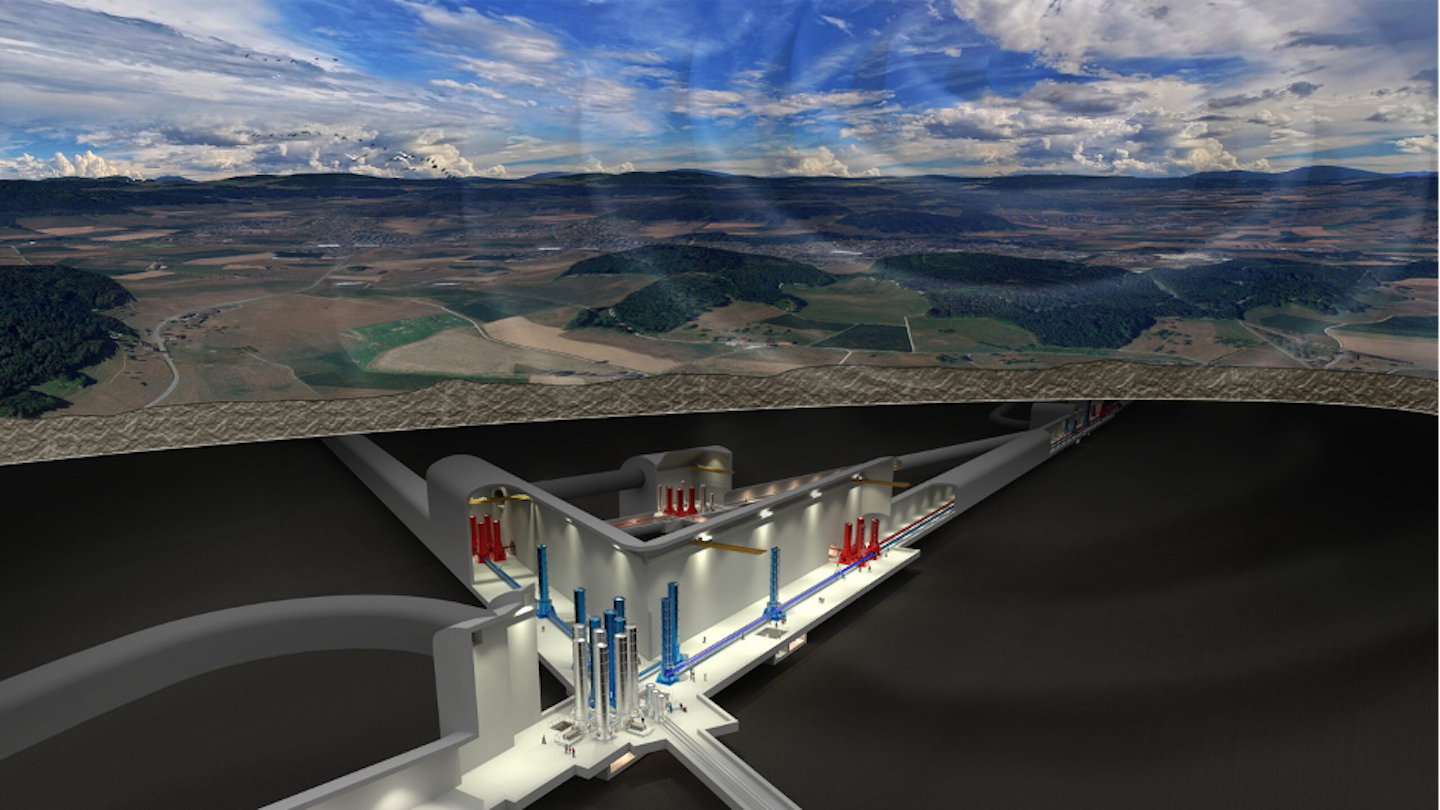
Artist's impression of the Einstein Telescope. (Image: Marco Kraan/Nikhef)
The discovery of gravitational waves by the LIGO/VIRGO collaboration in 2015 confirmed a century-old prediction of Einstein and opened a completely new window on the Universe. While particle accelerators like the Large Hadron Collider (LHC) recreate high-energy conditions similar to those of the early Universe to allow the study of fundamental particles and forces, gravitational-wave detectors observe tiny ripples of space-time caused by astrophysical phenomena such as black-hole mergers. These two types of facilities provide complementary ways of probing the Universe, deepening our understanding from a microscopic and a macroscopic perspective.
The Einstein Telescope (ET), a next-generation gravitational-wave detector currently under study, will be Europe's most advanced gravitational-wave observatory. Situated underground, it would detect gravitational waves by constantly monitoring the lengths of long detector "arms" using sensitive lasers and mirrors kept under ultra-high vacuum conditions. The enabling technologies for the ET, a CERN-recognised experiment, therefore overlap strongly with those required for accelerator facilities such as the LHC and future colliders.
The ET project benefits from several collaboration agreements between CERN and the lead institutes (Nikhef in the Netherlands and INFN in Italy). The first agreement, signed in October 2022, covers the fields of vacuum, materials, manufacturing and surface treatments. In September 2023, the ET study was the subject of a further agreement with CERN on civil engineering. In March 2025, a new agreement was signed to extend CERN's contributions to engineering and safety. In this framework, CERN and other ET partners will collaborate on the safety and engineering studies required for the elaboration of a preliminary technical design report.
"This collaboration is in alignment with CERN's expertise, mission and ongoing work on the Future Circular Collider (FCC) project and is a unique opportunity to leverage significant synergies in underground infrastructure and large-scale safety systems," says Jean-Philippe Tock of CERN's Engineering department. "Given that the challenges and solutions developed for the ET will directly overlap with those of the FCC, this collaboration will enable a mutually beneficial exchange of knowledge, expertise and innovation."
CERN's Engineering department will support the ET activities in areas including power distribution, signal cabling and optical-fibre installation, cooling and ventilation, access and safety systems, configuration management, spatial integration, planning and project coordination. The design of technical infrastructure and safety considerations are closely interconnected, which makes combining them within a single agreement an efficient solution.
"A facility as groundbreaking as the Einstein Telescope demands innovative safety solutions, not merely the adjustment of existing models," says Saverio La Mendola (CERN HSE unit). "The expertise of the Occupational Health and Safety group in designing safety systems for CERN's current and future facilities will also provide valuable insight for the ET collaboration."
The location of the Einstein Telescope will be decided in the course of the study phase, with the aim of the facility being operational from 2035 and collecting physics data by 2040. Offering greatly improved sensitivity over the current LIGO and VIRGO gravitational-wave observatories, it will allow researchers to study the birth of black holes, the structure of neutron stars and the nature of the Universe immediately after the Big Bang. By sharing its expertise in many domains, CERN will help to make this promising scientific future a reality.






